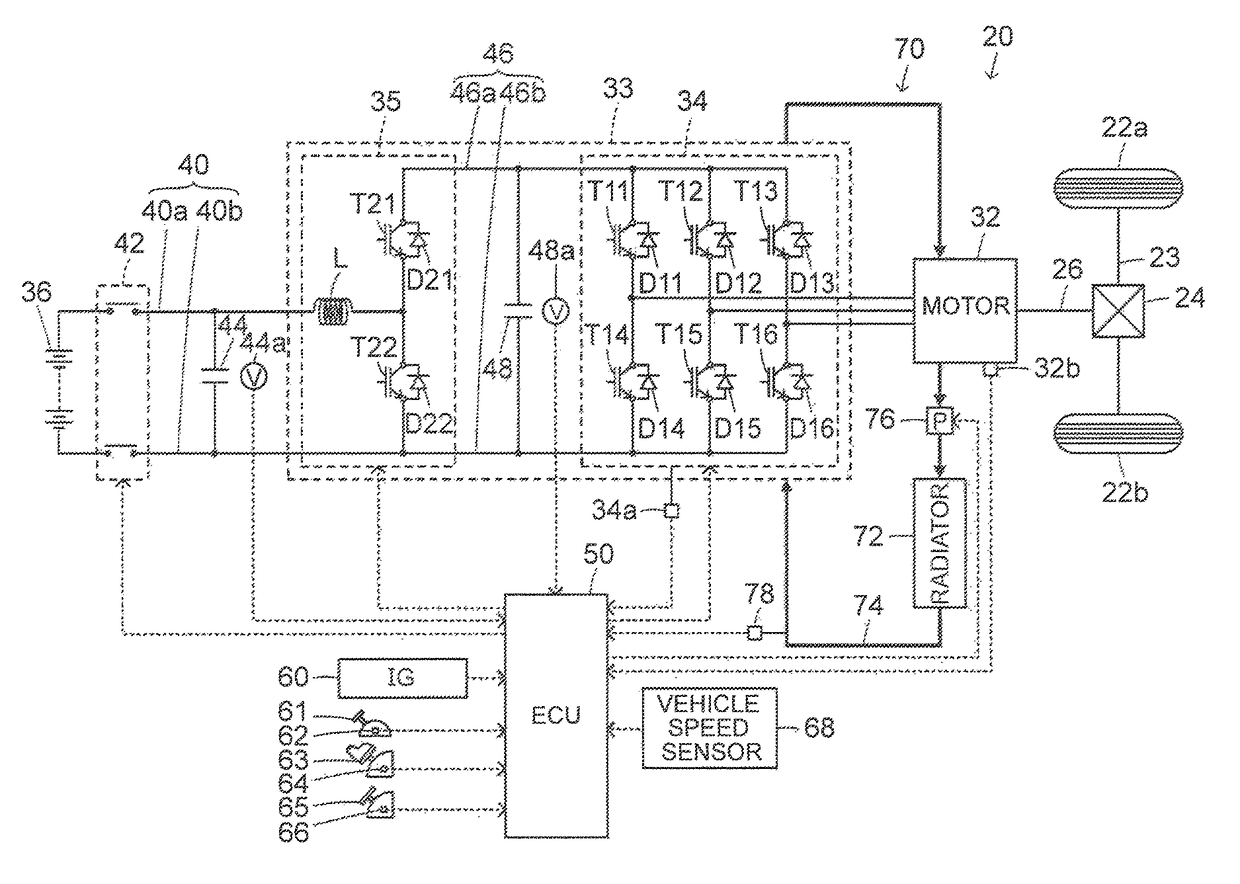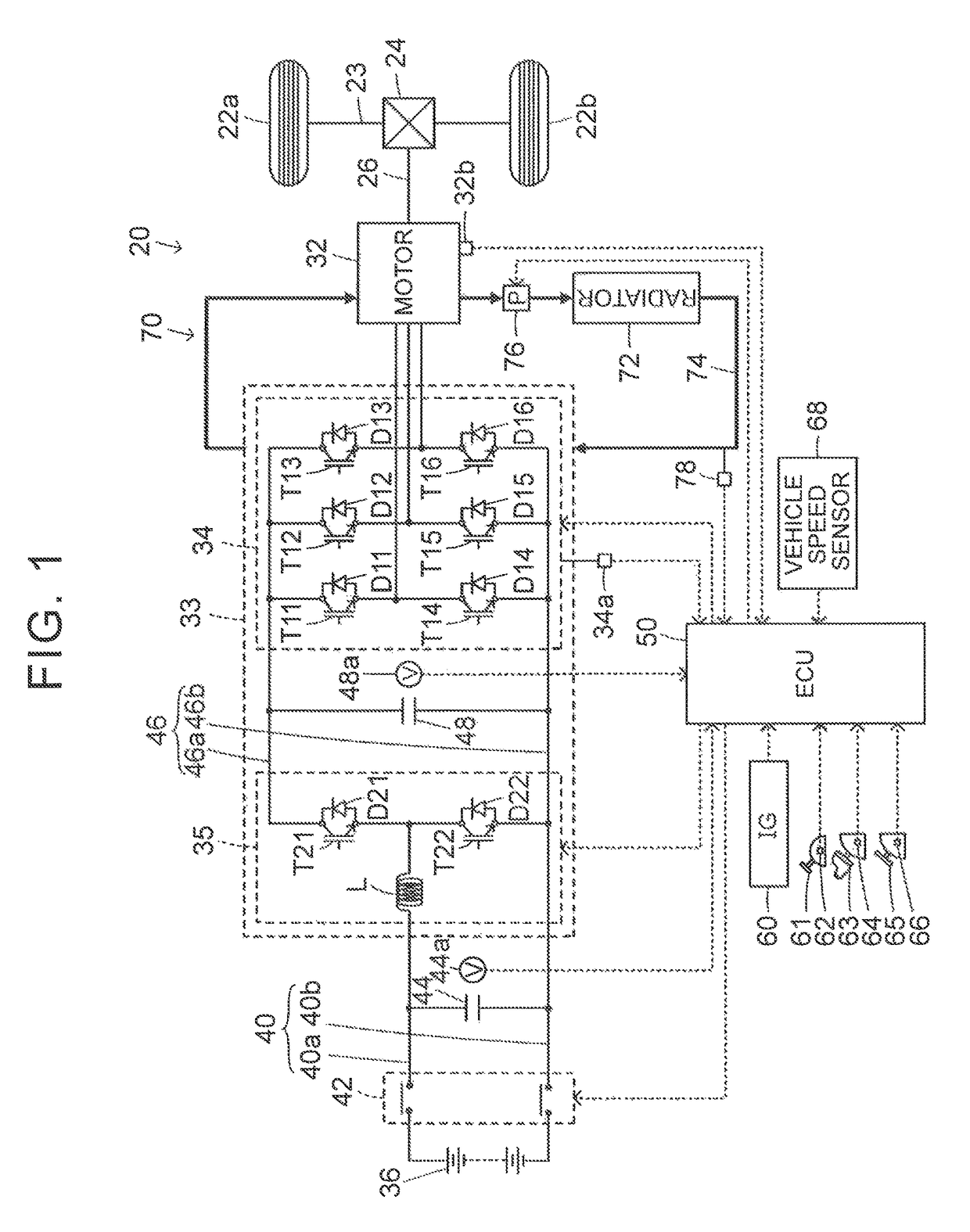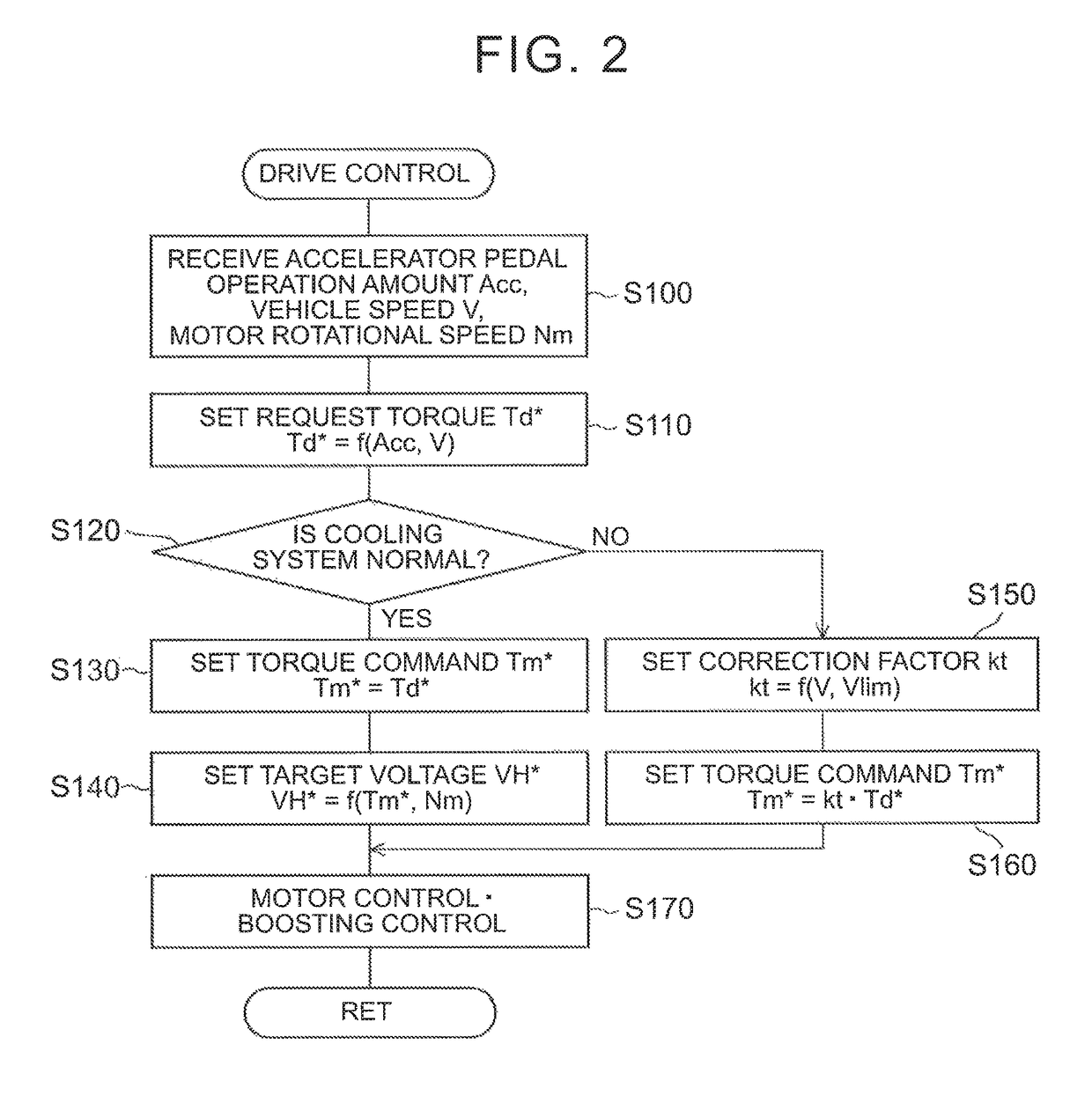Electric vehicle
a technology of electric vehicles and motors, applied in the direction of electric energy management, electric devices, transportation and packaging, etc., can solve the problems of insufficient limitation the element temperature of the inverter is abruptly increased, and the limit of the load factor of the motor is not sufficient, so as to suppress the overheating of the element of the inverter, suppress the increase of the element temperature of the inverter, and boost the power
- Summary
- Abstract
- Description
- Claims
- Application Information
AI Technical Summary
Benefits of technology
Problems solved by technology
Method used
Image
Examples
first embodiment
[0029]Next, a description will be made on an operation of the electric car 20 of the first embodiment that is configured as described above, particularly, an operation thereof at a time when abnormality occurs to the cooler 70. FIG. 2 is a flowchart that shows one example of drive control repeatedly executed by the ECU 50 at specified intervals regardless of presence or absence of the abnormality of the cooler 70, and FIG. 3 is a flowchart that shows one example of vehicle speed voltage control during cooling system abnormality executed by the ECU 50 at a time when the abnormality occurs to the cooler 70. First, the drive control at a time when the cooler 70 is normal will briefly be described, and then, the drive control at the time when the abnormality occurs to the cooler 70 will be described. Noted that, as the abnormality of the cooler 70, states where cooling cannot be performed due to failure of the electric pump 76, failure of the radiator 72, leakage of the coolant, and the...
second embodiment
[0042]In such an electric car 120 of the second embodiment, when the abnormality occurs to the cooler 70, the vehicle speed that is set in advance in the manner to fall within the range where the counter-electromotive voltage Vm of the motor 32 is lower than the line voltage VB is set as the vehicle speed limit Vlim, and the motor 32 is subjected to the drive control such that the vehicle speed V becomes at most equal to the vehicle speed limit Vlim. Accordingly, because the counter-electromotive voltage Vm of the motor 32 is higher than the line voltage VB, the field-weakening control is executed. Thus, it is possible to suppress overheating of the element of the inverter 34, which is caused by the flow of the current through the element.
[0043]In the electric car 120 of the second embodiment, when the abnormality occurs to the cooler 70, the vehicle speed that is set in advance in the manner to fall within the range where the counter-electromotive voltage Vm of the motor 32 is lowe...
PUM
 Login to View More
Login to View More Abstract
Description
Claims
Application Information
 Login to View More
Login to View More - R&D
- Intellectual Property
- Life Sciences
- Materials
- Tech Scout
- Unparalleled Data Quality
- Higher Quality Content
- 60% Fewer Hallucinations
Browse by: Latest US Patents, China's latest patents, Technical Efficacy Thesaurus, Application Domain, Technology Topic, Popular Technical Reports.
© 2025 PatSnap. All rights reserved.Legal|Privacy policy|Modern Slavery Act Transparency Statement|Sitemap|About US| Contact US: help@patsnap.com



